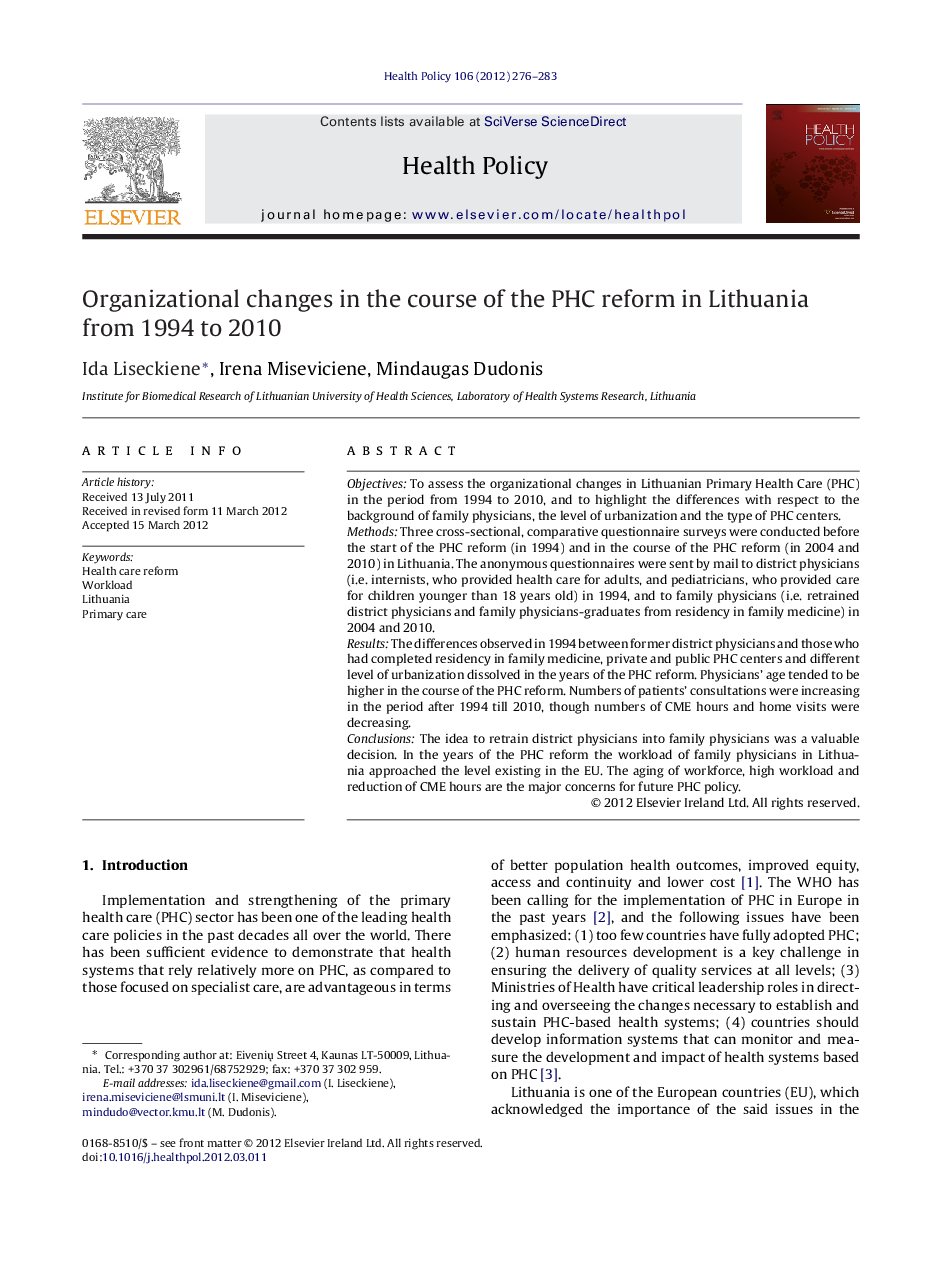| Article ID | Journal | Published Year | Pages | File Type |
|---|---|---|---|---|
| 6240008 | Health Policy | 2012 | 8 Pages |
ObjectivesTo assess the organizational changes in Lithuanian Primary Health Care (PHC) in the period from 1994 to 2010, and to highlight the differences with respect to the background of family physicians, the level of urbanization and the type of PHC centers.MethodsThree cross-sectional, comparative questionnaire surveys were conducted before the start of the PHC reform (in 1994) and in the course of the PHC reform (in 2004 and 2010) in Lithuania. The anonymous questionnaires were sent by mail to district physicians (i.e. internists, who provided health care for adults, and pediatricians, who provided care for children younger than 18 years old) in 1994, and to family physicians (i.e. retrained district physicians and family physicians-graduates from residency in family medicine) in 2004 and 2010.ResultsThe differences observed in 1994 between former district physicians and those who had completed residency in family medicine, private and public PHC centers and different level of urbanization dissolved in the years of the PHC reform. Physicians' age tended to be higher in the course of the PHC reform. Numbers of patients' consultations were increasing in the period after 1994 till 2010, though numbers of CME hours and home visits were decreasing.ConclusionsThe idea to retrain district physicians into family physicians was a valuable decision. In the years of the PHC reform the workload of family physicians in Lithuania approached the level existing in the EU. The aging of workforce, high workload and reduction of CME hours are the major concerns for future PHC policy.
